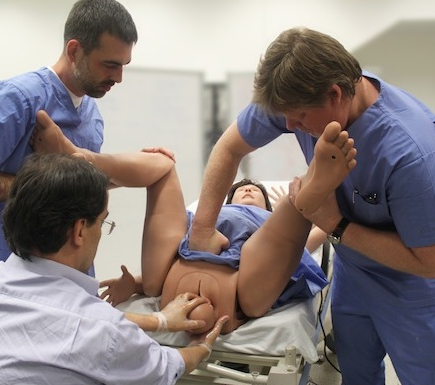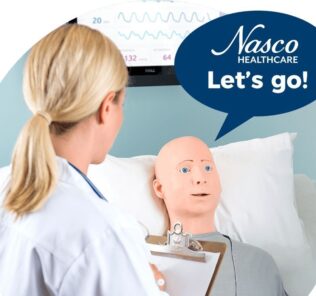Fidelis Maternal Fetal Simulator IMSH 2014 Interview Part 2: Advanced Engineering
Shortly after IMSH 2014 I posted a video about the belle of the ball: Fidelis from CAE Healthcare. You can watch part 1 of my Fidelis Maternal Fetal review interview here, in which we learn why CAE decided to enter into the birthing simulator market now with their first new simulator since the METI acquisition and the clinical learning opportunities of this advanced manikin. Part 2, shown below covers my interview with Devin Johns Group Leader, Technology and Standards at CAE Healthcare who helped lead the engineering team of Fidelis. Unique to CAE Healthcare is the ability to pull from the years of experience manufacturing some of the world’s leading aviation simulators. You can really see the attention to engineering detail and streamlined design of the Fidelis by seeing her in this video!
Sponsored Content:
About Fidelis
The CAE Fidelis Lucina Maternal Fetal Simulator was developed for clinicians and interprofessional teams who manage normal deliveries as well as childbirth complications and obstetrical emergencies. The birthing simulator offers reliable, realistic training for childbirth maneuvers and emergency response when time is short and teamwork is essential. Developed in partnership with leading maternal-fetal educators and biomedical engineers, Lucina is the only childbirth simulator with validated maternal-fetal physiology. The physiological modeling allows learners to monitor and manage both patients without instructor intervention
Coming Soon! The Added Value of Two Patients in One
The Lucina Maternal Fetal Simulator now offers the option to add a Female Patient Module with a non-pregnant abdomen and five Simulated Clinical Experiences (SCEs). Use your Lucina simulator year-round as both an obstetrical patient and a normal female patient. Users can also create their own SCEs on the Müse system. The five Female Patient Module SCEs are:
Sponsored Content:
- Chronic Heart Failure Exacerbation
- Acute Respiratory Distress Syndrome
- Sepsis with Hypotension
- Brain Attack with Thrombolytic Therapy
- Motor Vehicle Collision with Hypovolemic Shock
Learn more by Reading Part 1 of our Fidelis Review Demonstration from IMSH 2014!
Lance Baily, BA, EMT-B, is the Founder & CEO of HealthySimulation.com, which he started while serving as the Director of the Nevada System of Higher Education’s Clinical Simulation Center of Las Vegas back in 2010. Lance is also the Founder and acting Advisor to the Board of SimGHOSTS.org, the world’s only non-profit organization dedicated to supporting professionals operating healthcare simulation technologies. His co-edited Book: “Comprehensive Healthcare Simulation: Operations, Technology, and Innovative Practice” is cited as a key source for professional certification in the industry. Lance’s background also includes serving as a Simulation Technology Specialist for the LA Community College District, EMS fire fighting, Hollywood movie production, rescue diving, and global travel. He and his wife Abigail Baily, PhD live in Las Vegas, Nevada with their two amazing daughters.
Sponsored Content:




















